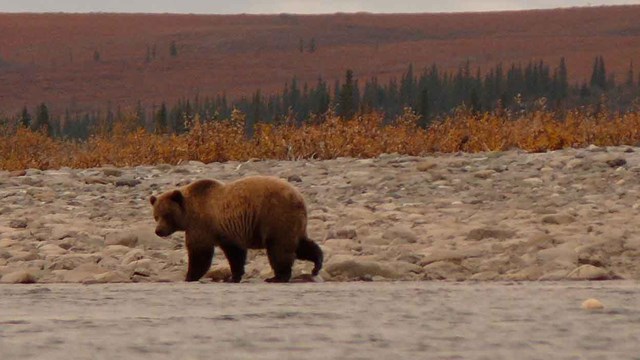
NPS
Black bears are the smallest North American bear. While black is a common color of their coat, the color can range from black to white, with brown, cinnamon, and even bluish shades in between.
Brown bears and grizzly bears are the same species. The tern "brown bear" is generally used to describe the coastal bears. Because they have access to the plentiful salmon runs, the occassional beached whale, and other sea food (such as clams, mussels, and other fish) and the coastal climate is a little more mild, these bears tend to grow larger than grizzly bears that live primarily in the interior.
Polar bears are considered marine mammals because they spend the most of their time on or near sea ice and are excellent swimmers. They are not commonly seen in parks, though occassionally they can be found in the Arctic parks of Bering Land Bridge National Preserve and Cape Krusenstern National Monument.
Alaska has amazing opportunities to view brown bears. Lake Clark National Park and Preserve and Katmai National Park and Preserve are two places where bears congregate to feed on salmon, but grizzly or brown bears can be seen in most parks. If you can't get to Katmai today, you can always check out the web cams to see what is happening out there.
Learn more about bears in other parks in the country. And check out this video, Staying Safe in Bear Country.

Monitoring Bears in the Arctic Network
Alaska accounts for more than 50% of the remaining North American brown bears and has the second largest population worldwide.

About Bears in Southwest Alaska
Salmon and other seafood are important resources for bears in Southwest Alaska.
Learn more about bears in Alaska
Last updated: March 8, 2021
